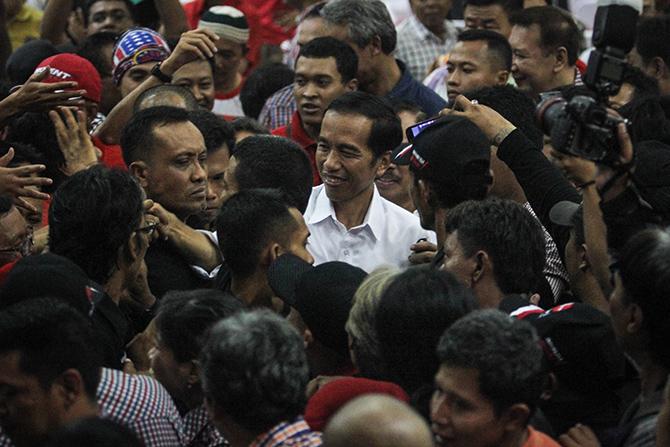
However, time is of the essence. With the short political cycle, President Joko will need to soon announce a small number of high-impact, transformational national development initiatives. These should be high profile, inclusive and combine near-term tangible impact with the creation of a “virtuous cycle” of reform. This is not easy. In the balance of this section, my objective is to suggest a selected portfolio of actions that will provide both tangible short-term gains to build support, while in parallel investing now in the longer human and physical capital required to realize Impian 2085.
Let me, therefore, conclude by proposing three large initiatives for debate, discussion and possible inclusion in a “Vision Indonesia” initiative:
- Design and announce a national transformation project as a cross-party supported, technocrat-led initiative from President Joko but with day-to-day leadership assigned to a respected technocrat minister with business experience, and supported by nationally respected figures. To support this initiative, the president could draw on a mix of existing agencies and independent academics and institutions dedicated to government reform.
- Launch a combined national e-government/re-engineering of government initiative. With its size, complex national and regional electoral process, and incomplete implementation of decentralization, Indonesia is bound in red tape even more complex than encountered by Thailand’s Prime Minister Prem in 1986. The mantra of business process re-engineering (“Obliterate, don’t automate”) remains valid, since 1986 technology has advanced dramatically. Rather than tackling bureaucracy and red tape at central and regional agencies in isolation, President Joko has the power, and hopefully the determination, to tackle them holistically. Throughout, the president would take personal overall responsibility as a critical, high-profile national initiative that will eventually touch the lives of every Indonesian and underpin the national governance model required to reach Impian 2085. The lessons from other e-government programs, such as in Sweden, are that they can achieve substantially more effective coordination of the central and regional governments.
- Relaunch the 1999-2000 BUMN Transformation and Value Creation Program, to fund a national transformation program. The proven program in 1999-2000 to transform state-owned enterprises began by quantifying the gap between their current and potential value. The value gap at that time was approximately $100 billion. Today, it is now $270 billion. The governance model established in 1999 by Indonesia’s Ministry for State-Owned Enterprises worked very effectively during the initial program and could be quickly recreated under an overarching national transformation model led by President Joko.
Conclusion
The case I have sought to make in this essay is that our region’s post-World War II economic “miracle” has occurred in two distinct waves: globalization and then regionalization. We are now moving quickly into a third wave, which will require very different strategies and policies to win. -During the first two waves, the winners integrated into rapidly changing global supply chains and rode on to enjoy dramatic growth through international trade. The winners linked external growth with domestic development by improving skills, plus physical and institutional capacity.
However, with the continued decline of the World Trade Organization and the increasingly complex and politicized “noodle bowl” of bilateral and multilateral agreements, future growth will depend less on exogenous factors and more on skill-building and national institutional capability. This will reduce infrastructure and policy barriers to domestic market integration, thereby enhancing total factor productivity. While Indonesia was a latecomer to trade-driven growth thanks to Waves 1 and 2, the nation has the potential to be a leader in the emerging Wave 3 environment.







%20resized.png)
